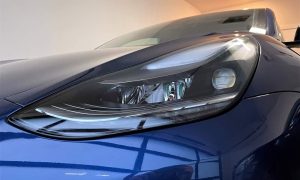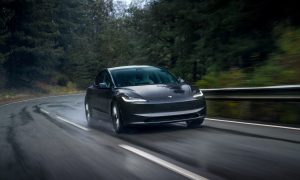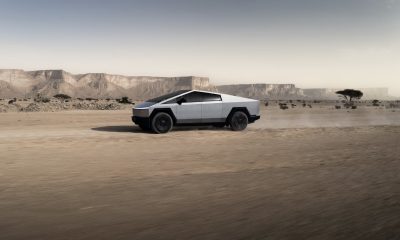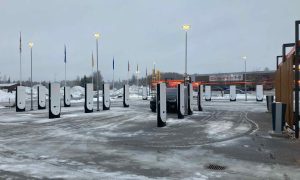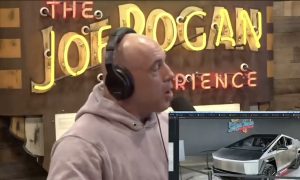News
Tesla and SolarCity merger to be voted on by shareholders on Nov. 17
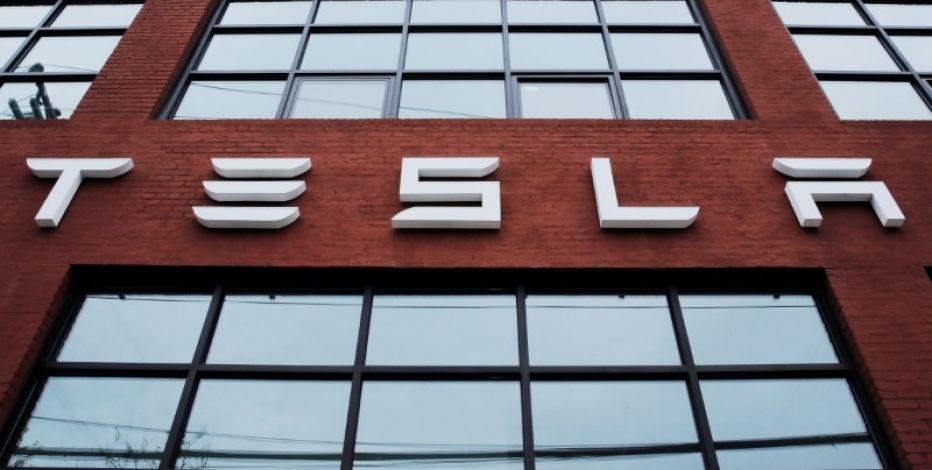
Tesla and SolarCity announced this week that the shareholder vote to approve or reject the proposed merger between the two companies will take place on November 17. Before that happens, SolarCity will unveil is newest product, a solar roof, on October 28. Instead of adding a solar panel system over an existing roof, the solar roof will actually be the roof. Elon Musk has said it will last as long as a traditional roof and be more attractive than a rooftop solar installation.
Combined with Tesla’s latest Powerwall 2.0, Musk thinks the solar roof will create significant new demand for SolarCity products. In a blog post this week, Tesla said that on November 1, it “will provide additional financial information relating to its plans for the combined company.” It goes on to say the introduction of the solar roof combined with the new financial disclosures “will create a clear picture of how a combined Tesla and SolarCity will make solar and storage as compelling as electric vehicles – an achievement that would advance our mission of accelerating the world’s transition to sustainable energy.”
Musk, of course, is committed to addressing the issue of climate change by lowering the carbon emissions from fossil fuel powered vehicles and electrical generating plants. The Tesla blog post focuses on that goal. “If shareholders approve the transaction, a combined Tesla and SolarCity will be able to provide the first ever opportunity to generate, store and consume energy entirely sustainably, through a suite of integrated products that add aesthetics and function while reducing cost. By leveraging SolarCity’s installation network and Tesla’s global retail footprint, we can do this in a way that is seamless for our customers and that we expect will create significant value for our shareholders.”
The two companies still have to deal with lawsuits filed by disgruntled shareholders who are seeking to block the merger. Some have suggested the proposed merger is little more than a bailout for Musk’s cousins, Lyndon and Peter Rive, who head SolarCity. But recently, Musk tweeted that, if combined, neither company would need to raise more operating capital this year.
Between now and November 17, Tesla and SolarCity will continue their efforts to convince shareholders a merger of the two companies is in their best interest. Details for how shareholders can cast their votes on November 17 are contained in the Tesla blog post.
If you’re considering solar for your home or business, we encourage you to get a solar cost estimate first, based on your monthly utility bill and location. The service is being provided by an affiliate partner and fan to Teslarati.
News
Starlink executives meet with India’s Commerce Minister

Starlink is advancing its India entry plans, with senior executives meeting Commerce Minister Piyush Goyal.
Starlink senior executives and Minister Goyal discussed investments and partnerships in India. The talks are pivotal for Starlink’s entry into the Indian market. Starlink’s delegation, including Vice President Chad Gibbs and Senior Director Ryan Goodnight, met Goyal on Wednesday.
“Discussions covered Starlink’s cutting-edge technology platform, their existing partnerships & future investment plans in India,” Goyal posted on X.
The meeting with Starlink executives marked the first official engagement with an Indian Minister and underscores SpaceX’s commitment to the region, reported ET. As of this writing, Starlink has not announced future meetings with Communications Minister Jyotiraditya Scindia.
SpaceX has already started preparing to bring its satellite internet service to the Indian market. The aerospace company has secured deals with India’s top wireless carriers, Bharti Airtel and Jio Platforms, to distribute Starlink equipment and services through their outlets.
Bharti Airtel announced its partnership with Starlink first, followed by Jio Platforms. Both wireless carriers aim to leverage Starlink’s technology to expand internet access in India and their customer base. SpaceX is also in discussions with Vodafone Idea Ltd.
“We are in exploratory talks with various Satcom providers, including Starlink,” commented Vodafone.
These partnerships position Starlink to tap India’s vast telecom market, with potential for further collaboration. Despite these strides, Starlink still awaits regulatory approval to operate in India.
As of November 2024, the company must fully comply with the government’s security regulations, particularly on data storage, to secure its license. The pending approval highlights the complexities of entering India’s tightly regulated telecom sector, where compliance is critical.
Starlink’s push into India aligns with its global expansion strategy, leveraging its satellite constellation to deliver high-speed internet to underserved regions. The partnerships with Bharti Airtel and Jio Platforms, combined with ongoing talks with Vodafone Idea, signal strong local support for SpaceX’s technology.
However, regulatory hurdles remain a key challenge. As Starlink navigates India’s security requirements, its investments and carrier tie-ups could reshape the nation’s internet landscape, offering a new era of connectivity if approval is granted.
Elon Musk
Tesla confirms rollout of critical feature, but Cybertruck misses out
Tesla’s S3XY lineup will get the Adaptive Headlights, but Cybertruck will not.

Tesla has confirmed the rollout of a new, critical feature that is coming to the United States for the first time.
However, the Cybertruck will unfortunately miss out on it.
Tesla has a distinct advantage among many automakers as their Over-the-Air updates make their vehicles better over time. While many automakers have the ability to roll out new features through these updates, Tesla has been shown to be one of the companies that can truly make things significantly better with their cars.
A new feature coming to the United States and now rolling out is Adaptive Headlights. This feature will be applied to Model S, Model 3, Model X, and Model Y vehicles with the proper hardware.
Adaptive Headlights are different than your typical auto highbeams in the way that they can dim certain pixels of the bulb to keep visibility for the Tesla driver high, while eliminating glare for those who are in oncoming cars:
🚨 Tesla’s Adaptive Headlights dim only select pixels of the bulb to increase visibility for all drivers, while keeping brightness at a maximum for you
Perhaps one of the coolest features around
— TESLARATI (@Teslarati) April 17, 2025
For the first time, Tesla is rolling out the feature to these vehicles in the United States. European Tesla owners were able to use the function several months back, but it was pending approval in the U.S.
At first, Tesla VP of Vehicle Engineering, Lars Moravy, said that the Cybertruck would have this feature. However, in late February, he confirmed that he was incorrect and the all-electric pickup will not have the ability to get Adaptive Headlights, as the company could not fit the correct hardware in the Cybertruck’s module:
@wmorrill3 is right – I was a little overzealous and my memory failed. S/X/3/Y have it – but those thin little headlight modules in CT, just couldn’t get it in there.
— Lars (@larsmoravy) February 28, 2025
The feature certainly makes visibility better for everyone on the road and will improve overall safety while eliminating the pesky and annoying feeling of being blinded by high beams.
The Adaptive Headlight feature for Tesla is part of the company’s Spring Update for 2025.
Elon Musk
Tesla Model 3 wins ‘most economical EV to own’ title in new study
The Tesla Model 3 has captured another crown in a recent study showing the most cost-effective EVs
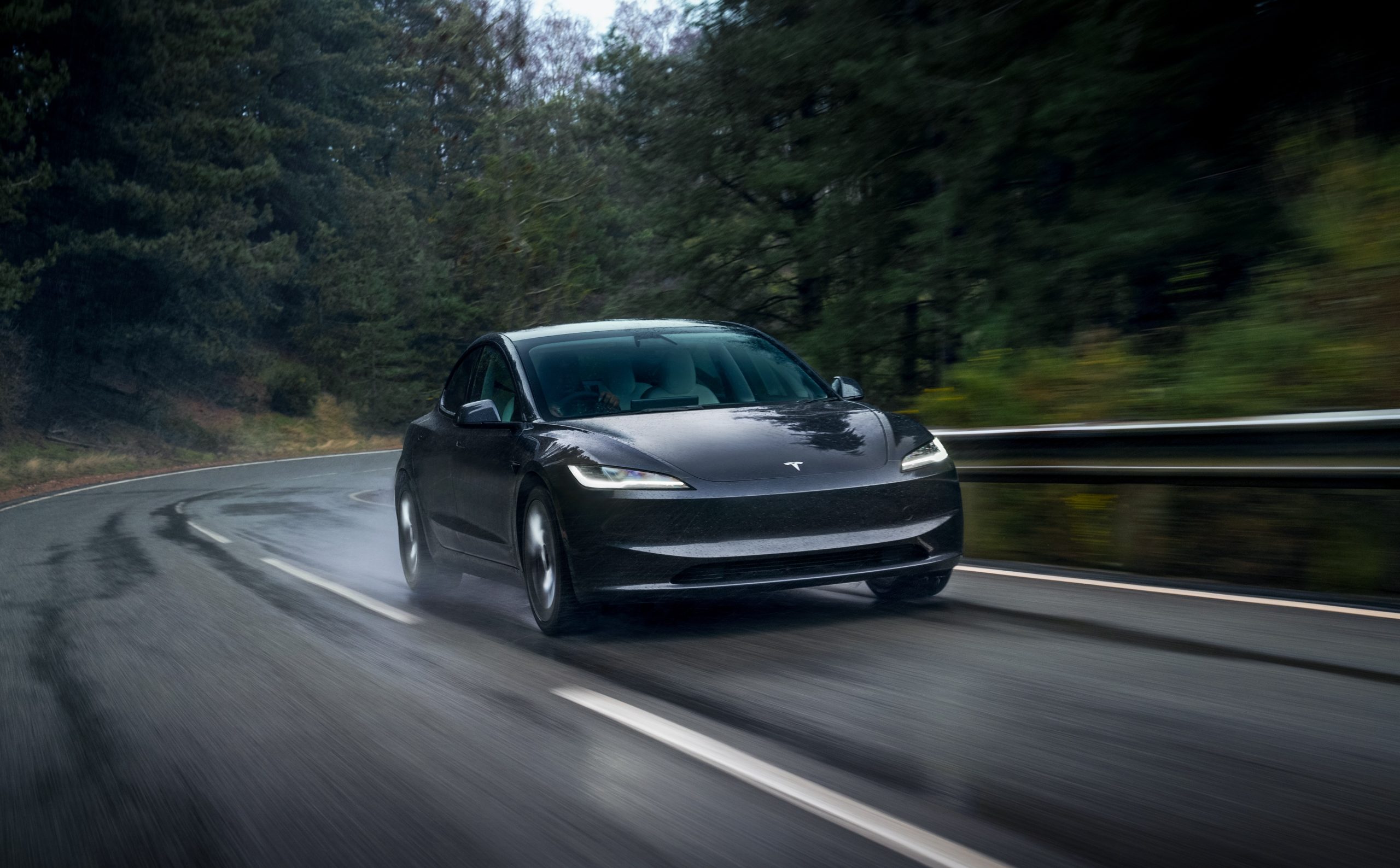
The Tesla Model 3 recently captured the title of “most economical electric vehicle to own” in a new study performed by research firm Zutobi.
Perhaps one of the biggest and most popular reasons people are switching to EVs is the cost savings. Combining home charging, lower maintenance costs, and tax credits has all enabled consumers to consider EVs as a way to save money on their daily drivers. However, there are some EVs that are more efficient and cost-effective than others.
Tesla police fleet saves nearly half a million in upkeep and repair costs
Zutobi‘s new study shows that EV cost-effectiveness comes at different levels. For example, some cars are simply better than others on a cost-per-mile basis. The study used a simple process to determine which EVs are more cost-effective than others by showing how much it would cost to drive 100 miles.
National averages for energy rates have been used to calculate the cost as they widely vary from state to state.
The Rear-Wheel Drive Tesla Model 3 was listed as the most economical vehicle in the study:
“The standard Tesla Model 3 is the most economical electric vehicle to drive in 2025. With a usable battery capacity of 57.5 kWh and a real-world range of 260 miles, it costs just $3.60 to drive 100 miles. That translates to an impressive 2,781 miles per $100 of electricity—making it the most efficient choice for EV owners nationwide.”
It had an estimated cost of just $3.60 to drive 100 miles.
The Tesla Model 3 Long Range All-Wheel Drive was second, the study showed:
“Next is the Long Range version of the Model 3, which offers extended range and dual-motor all-wheel drive. With a larger 75 kWh battery and 325 miles of range, the cost to drive 100 miles is slightly higher at $3.75, still equating to a strong 2,665 miles per $100.”
This version of the Model 3 had a price of just $3.75 to drive 100 miles.
In third, the BMW i4 eDrive35 surprised us with a cost of just $4.12 to drive 100 miles:
“Rounding out the top three is the BMW i4 eDrive35, with a 67.1 kWh battery and a real-world range of 265 miles. Drivers can expect to pay $4.12 per 100 miles, which still allows for 2,429 miles per $100—a solid choice for those seeking luxury and efficiency.”
Several other Teslas made the list as well. The Model 3 Performance ($4.34 per 100 miles) was sixth and tied with the Volkswagen ID.3 Pure, the Tesla Model S Long Range ($4.35 per 100 miles) was 8th, and the Tesla Model Y Long Range was ninth ($4.36 per 100 miles).
-
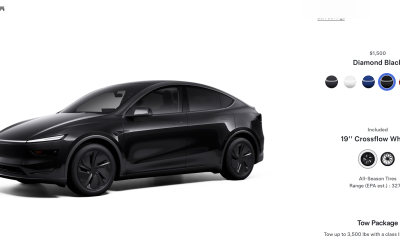
 News2 weeks ago
News2 weeks agoTesla rolls out new, more affordable trim of the Model Y Juniper in U.S.
-
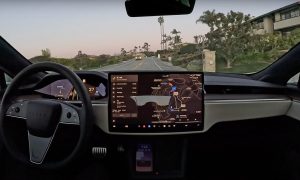
 News2 weeks ago
News2 weeks agoTesla expands Early Access Program (EAP) for early Full Self-Driving testing
-
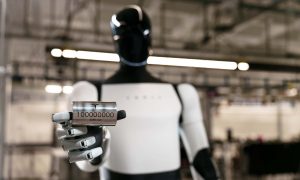
 News2 weeks ago
News2 weeks agoTesla celebrates key milestone for 4680 battery cell production cost
-

 News2 weeks ago
News2 weeks agoElon Musk will continue as DOGE adviser: VP Vance
-
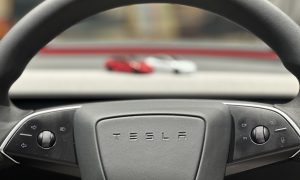
 Investor's Corner2 weeks ago
Investor's Corner2 weeks ago“Nothing Magnificent about Tesla (TSLA),” claims Jim Cramer
-
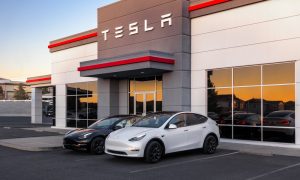
 Elon Musk2 weeks ago
Elon Musk2 weeks agoThis Tesla vandal caused thousands in damage, but she was let off the hook: Here’s why
-

 News1 week ago
News1 week agoI took a Tesla new Model Y Demo Drive – Here’s what I learned
-
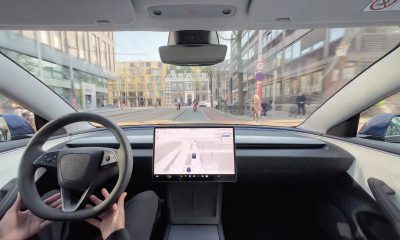
 News2 weeks ago
News2 weeks agoTesla Europe shares FSD test video weeks ahead of launch target

